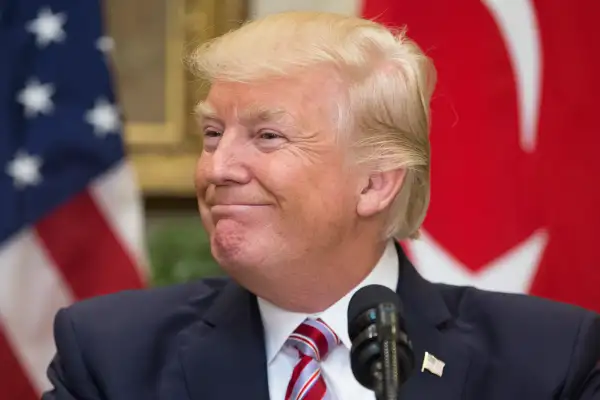5 Ways Trump's New Budget Plan Could Fail

In Washington, the release of a new president's first budget is considered a big deal because it's seen as a blueprint for the incoming administration's political and policy agenda.
In reality, though, presidential budgets are really only wish lists that are predicated on rosy assumptions that may never come to pass.
Here are five things that could easily upend the president's plan:
#1) Congress may not rubber stamp the president's agenda.
While it's the White House's job to propose a list of spending priorities and cuts, it is Congress that actually controls the nation's purse strings.
So while the Trump administration has just proposed a formal $4.1 trillion spending plan, Congress can — and will — pick it apart, leaving in and enhancing spending on programs that it prefers will stripping out or reducing appropriations for things that Congress differs with the president on.
At the end of the day, don't expect the U.S. budget to look much like what the Trump administration is proposing today.
What else could go wrong?
#2) Economic growth could fall well short of 3%.
No president wants to be seen as a spendthrift. President Trump is no different. That's why his new budget, which was released today, assumes big cuts in taxes while increasing spending on things such as military spending and border patrol — while still quashing the federal budget deficit a decade out.
How does he do that? By assuming that the U.S. economy will grow at an annual rate of 3% after inflation for the next decade. That's a full percentage point higher each year than the U.S. economy grew at during the the previous decade.
To put this in perspective, three of the last four presidents averaged annual GDP growth of just 2% or less.
Meanwhile, the Federal Reserve projects that U.S. gross domestic product will rise only around 2% annually for the next next three years — and then just 1.8% a year thereafter.
"Apparently, the budget forecasts that U.S. economic growth will rise to 3.0% because of the administration’s policies — largely its tax cuts and perhaps also its regulatory policies," writes economist Larry Summers in the Washington Post.
"Fair enough if you believe in tooth fairies and ludicrous supply-side economics," added Summers, a former Treasury Secretary under President Clinton and a key economic adviser in the Obama administration.
Moreover, economic expansions have typically lasted about 39 months on average. This one is already more than 73 months old. If there is a recession in the early stages of this president's 10-year plan, that would render the overall goal of 3% or higher growth even harder to accomplish.
#3) Trump might not win passage of all his desired tax cuts
Even if you believe that 3% growth is attainable — the last president to accomplish this feat was Bill Clinton, who oversaw GDP growth of 3.8% a year on average during the tech-fueled growth of the 1990s — Trump himself assumes that faster growth will be predicated on winning approval for his sweeping tax cut plan.
That's a big if.
Moreover, Summers explains that the Trump administration uses a bit of jujitsu to proclaim the budget revenue neutral.
"You can’t use the growth benefits of tax cuts once to justify an optimistic baseline and then again to claim that the tax cuts do not cost revenue," writes Summers. "At least you cannot do so in a world of logic."
#4) What if Trump and Congress can't repeal Obamacare?
In the executive summary describing the budget, the White House says it will reform Medicaid, which provides health insurance to millions of children and indigent adults, "by giving States the choice between a per capita cap and a block grant and by empowering States to innovate and prioritize Medicaid dollars to the most vulnerable populations."
This is another way to frame the proposed $800 billion reduction in the federal health program called for in the American Health Care Act (AHCA), which narrowly passed the House of Representatives earlier this month. The budget also calls for any payments to Planned Parenthood.
However, the AHCA is far from being signed into law.
A group of Senators are currently crafting their own version of the bill. According to reports, there is much less of a desire to include such dramatic cuts to Medicaid, and at least two Senators have come out against defunding Planned Parenthood.
#5) What if Trump can't reform government as he promised in the campaign?
The proposed budget also carries an oblique, albeit significant reference to reducing non-defense spending. The administration plans to save $1.4 trillion over the next 10 years, about two-fifths of federal outlays, by planning to "Reorganize Government and apply two-penny plan to non-defense discretionary spending."
While the budget, or executive statement, doesn't dive into specifics, the cut and thrust of the plan is to, each year, cut two cents per dollar spent. That means everything from economic revitalization to medical research would see dramatic cuts over the next decade.
Congress, while controlled by the GOP, has showed no desire to do so.
